
FREE MARCH 2024 PRIMROSE HILL COMMUNITY ASSOCIATION AND Ready Steady Go Nursery PLUS Windows on the Past The Volunteer Phone Box Painter





3 CONTENTS & PREVIEW MARCH 2024 22 05 Editor’s Letter 07 On The Street Remembering Virginia Smith 16 What’s On Things to do this spring 18 Chalk Farm Foodbank How to donate 19 Under the Hornbeams A review of Emma Tarlo’s latest book 20 Windows on the Past The Story of Primrose Hill 22 The Volunteer Phone Box Painter Rob Pammen talks about why he paints phone boxes 24 Ready Steady Go –And They’re Off! The Mole on the Hill talks to Jennifer Silverton about Ready, Steady, Go 26 Mary’s: Working to prevent knife crime Xandra Bingley on community efforts to tackle the problem 28 Pictures from Primrose Hill 30 Answers to Primrose Hill Quiz 31 Hello, Primrose Hill! YOUR STORY www.hkjewellery.co.uk Speak to our studio designers & start your bespoke journey YOUR DESIGN Hertfordshire Jewellery Centre 01462 790 565 North Barn, Fairclough Hall Farm, Halls Green, SG4 7DP Cambridge 01223 461 333 6/7 Green Street, CB2 3JU London 0208 154 9500 69 Regent’s Park Road, Primrose Hill, NW1 8UY St Albans 01727 221 160 20 Chequer Street, AL1 3YD On The Hill On The Go @onthehill_mag @onthehillinfo @onthehillinfo onthehill.info Keep up with the latest news and happenings on our social media channels.


We offer a range of specialist skills across the full spectrum of interiors, architecture and construction, resulting in an outstanding portfolio of projects.
Our designs are timeless, inviting and finely tuned to match the unique needs of our clients.
We offer face-to-face consultations.
11 Ferncroft Avenue London NW3 7PG
Tel: 07968 441 840 | www.chinteriodesign.uk

“He
The Team
Editor
Maggie Chambers editor@onthehill.info
Editorial Group
Dick Bird, Doro Marden, Phil Cowan, Pam White, David Lennon, Mole on the Hill, Micael Johnstone, Andrew Black
Social Media and Website Editor Jason Pittock
Subeditors
Brenda Stones, Vicki Hillyard
Cartoon
Bridget Grosvenor Photographer
Sarah Louise Ramsay www.slrphotography.co.uk Design
John Dillon hello@jwdillon.co.uk
Advertising Sales
Jane Warden ads@onthehill.info
Special thanks to all our contributors.
This publication is created by the community and for the benefit of Primrose Hill on behalf of your local charity, the Primrose Hill Community Association (PHCA). All proceeds from this publication go directly to fund the charity. We hope you enjoy.
www.phca.cc
Disclaimer: the views in the magazine are not necessarily the views of the PHCA.

Welcome to March
Our community was deeply shocked by the stabbing on the top of Primrose Hill on New Year’s Eve, and our hearts go out to the family and friends involved. Tragically, it occurred soon after another fatal stabbing at the end of December, in nearby Abbey Road. Our local charity, Mary’s, works 24/7 to reduce violence in the area. In the last two years they have removed hundreds of knives from the streets, through negotiations or via their knife amnesty bin on King Henry’s Road. They are also part of the Safer Parks Panel for Primrose Hill. Let’s hope Primrose Hill can join together in its pursuit to remove knives, and help to make our streets safe again. You can read about the work Mary’s does on p 26. Please support this work as much as you’re able, as it’s crucial, both to the young people whose lives are being ruined, and ultimately to us all as a community.
On a (much) lighter note, you might have noticed how freshly painted our iconic phone boxes are near The Queen’s. They’ve been made over, along with others in the area, by Rob, a volunteer who paints them for free. BT just send him the paint and he gets on with it. In his free time, he has painted nine in the past year, which is such a generous gesture. BT, if you’re reading this, Rob deserves a nice holiday somewhere sunny ...
There’s good news for disco fans as the Village Disco is back this month. Shimmy on down to the Community Centre on 16 March (if you have a ticket!). There are a lot of events in the pipeline and I’m looking forward to seeing you all out and about as we emerge from hibernation.


ISSN 20-6175
This product is made of material from well-managed, FSC® certified forests and other controlled sources
onthehill.info
Cover Photograph
Sarah Louise Ramsay
Editor’s Letter
spends every spare moment painting the town red . .
.”
Full home renovation completed 2023
CHARLOTTE HEATHER INTERIORS
ARCHITECTURAL DESIGN AND BUILD PRACTICE & INTERIOR DESIGN CONSULTANCY
Book now to reserve your place Call 020 7722 8784 or scan the QR Code or email: headteacherspa@saintchristinas.org.uk
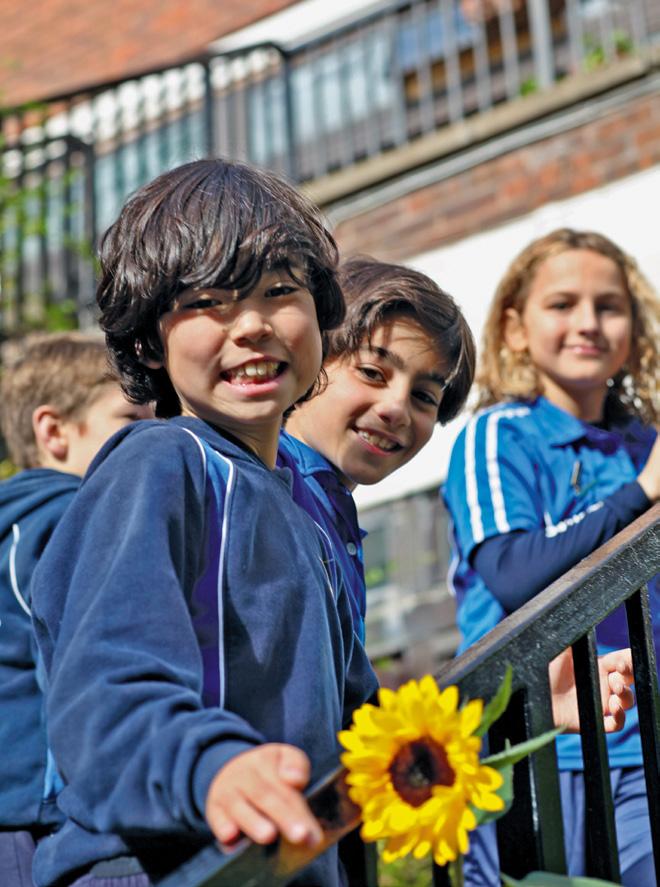

(In reference to the oak tree on the south slope of Primrose Hill which was planted to mark the anniversary of Shakespeare’s birth. There was an accompanying plaque, which has since been lost.)

7
PRIMROSE HILL NEWS, VIEWS, CULTURE AND LIFESTYLE
Virginia Smith (p8)
Primrose Hill Quiz (p9) AND MORE
Postcard (p12) on
New
Garden in Regent’s Park
(p13)
Continued
p 8
An outstanding Co-educational School located in St John’s Wood
life... a great beginning’
Photo by Lars Christiansen MORNING
Virginia Smith
‘A great
OPEN
Tuesday 12th March 2024 9.30 to 11.15 am
SCS OnTheHill Mar2024ART
SCS ½ page OnTheHill March 2024 ART v1.indd 1 24/01/2024 17:27
saintchristinas.org.uk
On The Hillimerick
When for it, we’d searched everywhere under the sun, Our Shakespeare oak plaque, we’d had to abandon, But if we’d found it, Then you’d have to admit, All’s Well That Ends Well with Love’s Labour’s Won.
By Howard Richards
Virginia Smith (1927–2024)
By Dick Bird
“Too earnest!” said a previous editor. “What this magazine needs is a cartoon. Who can draw?”

Where else to look but to a founding member of the Community Association who had been producing posters and illustrating publications about Primrose Hill for almost 50 years? Virginia Smith, who has died aged 96, lived in Regent’s Park Road for 70 years after arriving in London from Australia. A trained artist, skilled in etching, calligraphy and screen printing, Virginia’s outstanding quality was as an illustrator.
Professionally successful in Sydney, she came to London to decide whether to marry the bohemian boyfriend of whom her father fiercely disapproved. She did, and became Mrs Edwards. She and Rod, a creative jeweller, were part of an expatriate
set of artists − including Cedric Flower, Cynthia and Sydney Nolan, and Barry Humphries, of course − finding a bigger world in which to exercise their talents than Australia could offer in the 1950s.
Despite the vicissitudes of life − and there were many − Virginia retained a vulnerable, naive, sweet personality beloved of her friends, a total lack of relationship with money, and an unquenchable sense of humour that would erupt in a deep, fullthroated laugh. “Darling!” each conversation would start, and you felt the sun always shone on Sydney Harbour. I can’t pass Ginny’s drawings framed on my wall without feeling some of that warmth, and I smile.
In her last years, Virginia was wonderfully helped by her neighbour, Vera Creasey.

TARGETS:

The Regent’s Canal Quiz
Compiled by Bernard George
This one is about the Regent’s Canal. Incidentally, there are no questions about fish as I have never seen one in the canal. Does anyone know if there are there any? If not, why not?
1) The Regent’s Canal is less than 10 miles long
OR
It is more than 20 miles long.
2) The Fleet River crosses the canal into Regent’s Park from the western side of Primrose Hill.
OR
That is the Tyburn.
3) Beneath the canal footpath runs a sewer.
OR
These are high-voltage cables.
4) You can walk along the canal from Primrose Hill to Victoria Park.
OR
You will have to swim some of the way as the canal goes through a tunnel.
5) The bridge by Camden Lock is known as Lovers’ Bridge.
OR
It is known as Dead Dog Bridge.

Offering
Laser
Doctor
Profhilo
Polynucleotides
Microdermabrasion
Chemical
NIR
Medik8
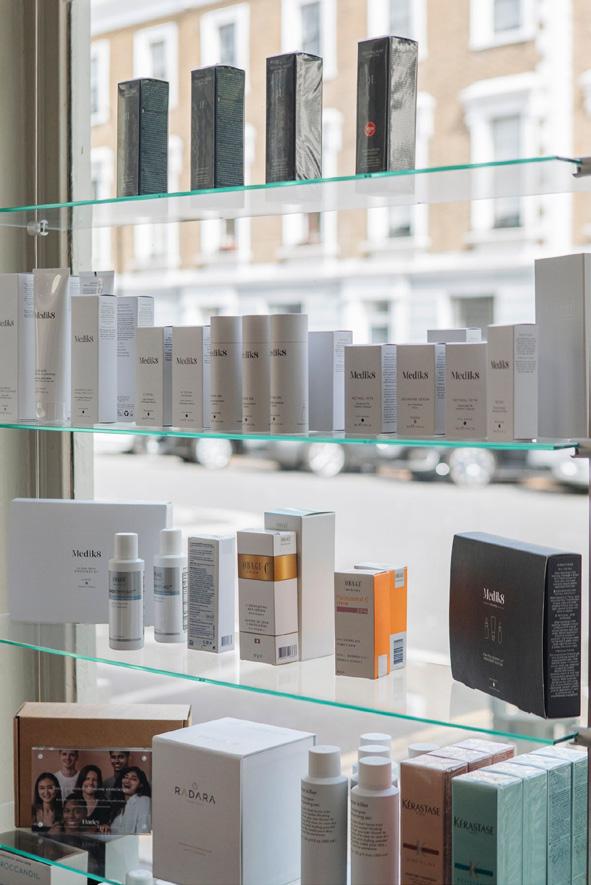

6) The Camden Catacombs at Camden Lock were originally underground walkways for horses and ponies.
OR
They were depositories for dead bodies.
7) Macclesfield Bridge at the eastern end of Regent’s Park had to be rebuilt in 1874 after it collapsed under the weight of traffic.
OR
It was blown up by an explosion on a passing barge.
8) The Pirate Castle between Primrose Hill and Camden was purpose-built as a community centre.
OR
It was originally a pub.
9) This indented step was so that horses which fell into the canal could get out.
OR
It was for unloading barrels from barges.

10) This dialogue comes from Monty Python:
“What's that long parcel you've got in your bathing suit? It's something that I have invented... What? Regent's Park Canal. What a stroke of luck! With that canal, and this bottle of green liquid, I can swim across it without using a bridge. Any revenues from it, I'll split in two and keep both. Well, one doesn't get an offer like that every day!”
OR
It is from The Goon Show.
Answers on p 30
On the Street
9
@nuyu_london nuyulondon.co.uk info@nuyulondon.co.uk 020 3204 2020 9 Princess Rd, London NW1 8JN
Hair Removal
Led Aesthetics
- NEW!
Peels
Skin Tightening
& Obagi Skincare And More...
run aesthetics and skin clinic located in Primrose Hill !NEW TREATMENT! Introducing polynucleotides, a regenerative injectable skin treatment which restores skin firmness and elasticity whilst protecting against cellular damage
Family
Fine lines, wrinkles, dark circles, eye bags, crepey skin and dehydrated skin CALL US TO BOOK A CONSULTATION ON 02032042020 OR EMAIL AT INFO@NUYULONDON CO UK Over 600 5 star reviews
Postcards from Primrose Hill
This is a view of Haverstock Hill in about 1911, looking downhill towards Chalk Farm Road and Camden Town. In the distance, behind the horsedrawn carriage, is what is now the Seventh Day Adventist Church. On both sides of the street were shops where locals could do their daily shopping: a greengrocer at number 76; a tailor and dressmaker at number 82; a dairy at number 83.
In the foreground to the left, behind the large cart, is number 94, the Load of Hay Tavern. It was run by licensed victualler

Walter James Burdon who, according to the census of 1911, was born in the City of London in 1853. He ran the place with his wife Ellen, son Ernest, daughter Ada and daughter-in-law Mabel. The tavern was first mentioned in

licensing records from 1721, but the present building was erected in 1863. Luckily not much has changed on this stretch of road; it looks pretty identical today!
@old_primrosehill_postcards

NEWS & INFORMATION
Your regular update from PHCA, publisher of On The Hill from Primrose Hill Community Association
Spring is a busy time at the Primrose Hill Community Centre, with the popular Jumble Sale on 2 March and the (sold out) Village Disco on Saturday 16 March.
REGULAR ACTIVITIES
You can also join in the regular free or low-priced activities. You could try Qi Gong on Tuesdays, Open House every Wednesday, Lego Club on Thursdays for SEN children, Life Drawing on Thursday (there is a cost for this as we need to pay for models and a mentor). There are also two Narcotics Anonymous support groups, on a Thursday and a Saturday. Usually on Thursdays there is a walking group that is either just social or else has a particular theme; see the weekly bulletin or website for details. Then for older people there is a Chair Yoga session every Friday afternoon and Zumba Gold on Tuesdays.
We are planning to start a ‘Singing for the Brain’ Tuesday session soon, which will be aimed at people with dementia or other neurological conditions. Once this is in place we shall promote it widely, so do watch out for this one.
Dates for your diary include:
WELLBEING CAFE
Every Wednesday from 10am to 2pm the mezzanine floor at the Community Centre becomes our Wellbeing Café, where we serve hot and cold food, all by donation, with the space also doubling up as a ‘warm space’. This is part of our Neighbourhood Nosh project, which cooks fresh three-course takeaway meals every Thursday; these can be either collected from Oldfield or delivered to people in the community who are housebound. If you know of anyone who would benefit from either service, do get in touch at nosh@phca.cc.
LIBRARY
The Primrose Hill Community Library also provides a good programme of free or by-donation community activities and events. Mondays offer Rhyme Time in the morning, and early evening board games for adults. The first Tuesday in the month is Film Show (there is a charge for this), and every Tuesday morning is children’s ballet. On Fridays you can join bridge sessions, and every third Friday there are special music events. There are also regular author talks, which you can find out about by subscribing to the Library newsletter: phcl.org/subscribe.

Friday 26 April – ‘Curry-oke’, when the Bar will open for curry and karaoke
Thursday 2 May – Mayor of London and London Assembly elections
Friday 17 May – Top of the Hill Quiz, with Nick and Debbie, including special guest round by Dick Bird
Sunday 9 June – Tea Party in Chalcot Square
SIGN UP
To find out what’s going on in the area you can subscribe to our free weekly bulletin at www.phca.cc/subscribe To become a member, visit https://app.joinit.com/o/phca
food is very good and the sense of a brief Arcadian idyll is deliciously palpable.’


10
On the Street
On the Street Contact for dinner parties & private hire Join our mailing list for deals & events Open Every Night Until 10pm (5pm Wednesdays) 40 Chalcot Road NW1 8LS info@samscafeprimrosehill.com 0207 916 3736 ‘The
Giles Coren, The Times SAM’S CAFE, PRIMROSE HILL A HOME FROM HOME. Homemade Dishes Every Evening Veg & vegan options always available Catch of the Day, Pies, Steaks & Salads. Unique wine list chosen by experts
Primrose Hill Community Library
Here are the latest acquisitions from the library for a spring read:
Hardbacks
Margaret Atwood
Fourteen Days
Vincent Bevins
If We Burn
Lee Child and Andrew Child
The Secret
Peter Clark
The Men of 1924
Jonathan Glover
Israelis and Palestinians
Clare McGoogan
The Poison Line
Nina Stibbe
Went to London, Took the Dog
Bob Woodward
Rage
Paperbacks
Jennifer Antill
Small Acts of Kindness
John Banville
The Lock-Up
Geraldine Brooks
Horse
Caroline Buckland
Hillwalking London
Jo Callaghan In the Blink of an Eye
Lee Child
Bad Luck and Trouble
Ajay Chowdhury
The Cook
Liu Cixin
The Three-Body Problem
Harlan Coben
I Will Find You
Richard Coles
A Death in the Parish
Pierre Lemaitre
The Wide World
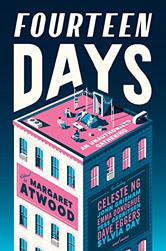
David McCloskey
Moscow X
Sophie Mackintosh Cursed Bread
Simon Mason
The Broken Afternoon
Kate Morton Homecoming
Paul Murray
The Bee Sting
Jo Nesbo
Killing Moon
Viet Thanh Nguyen
The Sympathizer
Joseph O’Connor
My Father’s House
Cecile Pin Wandering Souls
Mark Prins
The Latinist
Local financial advice
Tailored specifically for you
Peter Robinson
Standing in the Shadows
Michael Rosen
Getting Better
Curtis Sittenfeld
Romantic Comedy
Georgina Sturge
Bad Data
Tim Sullivan
The Dentist
Greta Thunberg
The Climate Book
Holly Watt
The End of the Game
Evie Woods
The Lost Bookshop
Children’s
Robie H Harris
Let’s Talk About Sex
Anthony Horowitz
Never Say Die, Nightshade
Beth Lincoln
The Swifts
Michael Rosen
The Incredible Adventures of Gaston Le Dog
New Garden in Regent’s Park
A new garden is being planned in Regent’s Park, opening in 2026 to coincide with what would have been Queen Elizabeth II’s hundredth birthday.
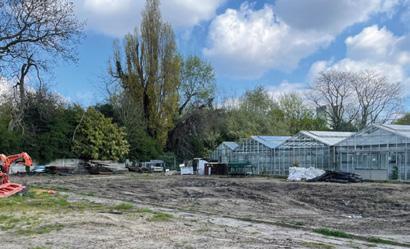
The garden will transform a former plant nursery – which once grew plants for London’s eight Royal Parks, but was decommissioned following the opening of the Hyde Park super-nursery in 2018 – into a tranquil two-acre garden that will offer visitors an immersive experience of nature. The nursery will be demolished in spring 2024 to make way for the new garden, which will include plant species that were significant to the late Queen’s life.

Designed by London-based architects HTA, the garden will open up a space that was not previously open to the
public, and be welcoming to all, with wide, even paths and frequent places to stop, sit and reflect.
It will celebrate biodiversity in the form of hedgerows, trees, meadows, wildlifeattracting plants and a new pond. All species selected will be ones that can adapt to the UK’s changing climate.
It will also incorporate a series of structures, including a pergola with climbing plants, and see the transformation of a disused water tower into an accessible viewing platform that will provide elevated views of the new garden.
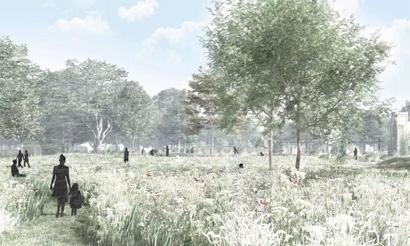
With a focus on sustainability, the aim will be to reuse a substantial amount of demolition material from the old site, such as crushed concrete, brick and steelwork.
Local residents and visitors to the park were encouraged to view the proposals on The Royal Parks’ website and provide feedback via an online survey.
On the Street On the Street 12 Quilter Financial Advisers are locally based fully qualified financial advisers who can help you with: Savings and investments planning Tax efficient investing Planning for school fees Retirement planning Protecting your loved ones Protecting your property Inheritance tax planning Mortgage solutions Your home may be repossessed if you do not keep up repayments on your mortgage. The value of pensions and investments can fall as well as rise and you can get back less than you invested.
learn more about how we can help please contact Jeremy Duke, DipFA, Financial Planning Consultant on: T. 07747 022257 E. jeremy.duke@quilterfa.com W. quilterfinancialadvisers.co.uk
To
13
News & Views
Licensing Hours Changes in Camden
Camden Council is proposing changes to the licensing hours for pubs and restaurants across the board, including Primrose Hill, as follows:
Monday−Thursday 11.30pm Midnight
Friday−Saturday Midnight 1am
Sunday 10.30pm No change
Applications will be granted automatic approval if Camden receives no objections.
If you have any concerns about this, email your councillors, especially Matt Cooper, who sits on various licensing committees.

Councillors can be contacted at the following addresses:
Matt.cooper@camden.gov.uk
Anna.BurrageCllr@camden.gov.uk
Ajok.Athian@camden.gov.uk
Please also copy in the Primrose Hill Residents Association: info@primrosehillresidents.com
Primrose Hill Community Library’s 5,000th Member

Primrose Hill Community Library is now 10 years old, and in November they celebrated the signing of their 5,000th member. Seven-year-old local boy Joseph Daly was with his mum Kate, grandad Jimmy and sister Evie when he received his membership card and a certificate, and they were treated to cakes and drinks to celebrate the occasion.
Felicity Huffman in Hir
Desperate Housewives actress Felicity Huffman will be living in Primrose Hill throughout her UK stage debut as the radical matriarch Paige in Hir, opening at the Park Theatre in Finsbury Park on 15 February. The cast includes Thalia Dudek, Steffan Cennydd and Simon Startin. Felicity says of playing Paige: “As an ardent fan of Taylor Mac, I'm so thrilled I get to act in one of Taylor’s brilliant plays. I studied in London back in the palaeolithic era, and it has been a dream of mine to come back here and work someday. I’m a lucky gal.”
The play runs until Saturday 16 March. www.parktheatre.co.uk
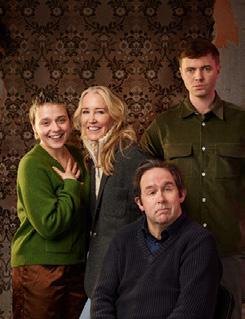
News & Views
Local Author Wins the Moore Prize

Local author and doctor Benjamin Black has won the Moore Prize for human rights publications with his book Belly Woman, about the care of pregnant women during humanitarian crises. This is the first time a health-related book has won the award. The book draws on the Ebola outbreak and covid crisis and highlights the dangers facing pregnant women when catastrophe strikes. During the pandemic, his maternity unit at the Whittington
Hospital was the only one that allowed birth partners to attend the birth, in the belief that the benefits of women feeling supported outweighed the theoretical risks to infection control. Benjamin wrote Belly Woman not only to raise awareness of past events, but also to show how far we still have to go before ensuring everyone has access to safe and dignified care. neemtreepress.com
The Apprentices Caring for London’s Royal Parks
The Royal Parks charity takes on up to 10 new paid horticultural apprentices every year. The apprentices work in one of the Royal Parks, and study at Capel Manor College in The Regent’s Park.
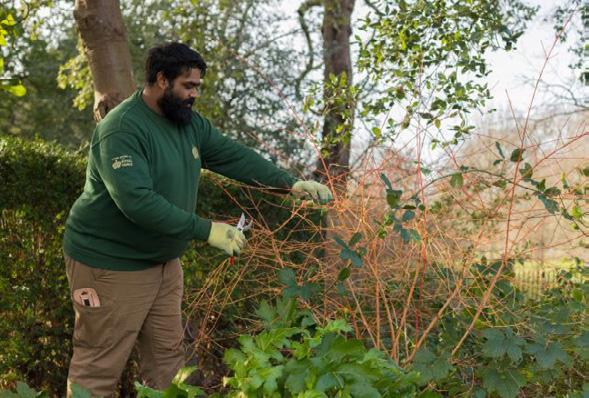
The course lasts a minimum of two years, and apprentices will receive a Level 2 qualification in Horticulture Operations. Apprentices master valuable skills, ranging from plant identification and soil science to cultivation and landscape design, to parkland management and pest control, with hands-on training in operating horticulture machinery. First and second year apprentices are paid National Living Wage whilst undertaking their study, moving on to London Living Wage should they choose to complete a third-year module. Applications for the apprenticeships will open on 25 March and close on 21 April.
To find out more and register your interest, visit: www.royalparks.org.uk/careers/apprenticeships/ horticultural-apprenticeships
15 14
Day Current closing
closing
Proposed
Photo by Michael Wharley
TUESDAY 5 MARCH
Film Show: Women on the Verge of a Nervous Breakdown A crazy, fast-talking farce with drugged gazpacho and a very young Antonio Banderas. PHCL. Doors open 7.15pm. £8 including a glass of wine. Tickets at phcl. org/filmshow.
WEDNESDAY 6 MARCH
The Feminist Folk Club
Hosts Lucy Ward and Pinky Ward invite you to spend the evening in their specially curated pop-up folk club with fantastic artists. CSH. 7.30pm. Book online.
SATURDAY 16 MARCH
Feldenkrais with Ana:
Re-education of the eyes
Awareness Through Movement lessons with a focus on a different theme each lesson, for people of all ages, interests and abilities. PHCC. Once a month. £25. More info: www. feldenkraiswithana.com or contact feldenkraiswithana@ gmail.com.
SATURDAY 16 MARCH
Martin Simpson
Universally acclaimed as one of the finest ever acoustic and slide guitar players, and a fine banjopicker to boot, Martin Simpson’s solo shows bear witness to an artist at the very top of his game. CSH. 7.30pm. Book online.
The Camden Choir English and Spanish Renaissance Music at St Mary’s NW3 3DJ. Tickets £15, students £10, children under 12 free. 6pm. Book via www.camdenchoir.london or pay at the door.
SUNDAY 17 MARCH
Family Barn Dance
Bring all the family and take part in lively dances from Britain and beyond in a supportive and fun environment! CSH. 3pm. Book online.
What’s On March 2024

THURSDAY 21 MARCH
Hannah James and Toby Kuhn
Hannah is an award-winning musician, dancer, songwriter and singer, a creative force renowned for her work with Lady Maisery and many others. Toby is a globetrotting French cellist whose post-classical playing is inventive and improvisational. CSH. 7.30pm. Book online.
SATURDAY 23 MARCH
Songs of the Sea Concert
Primrose Hill Choirs, Let the Children Sing and London Classical Choir at St Mary’s NW3 3DJ. 6−8pm. £10 (cash preferred), under-4s free. See primrosehillchoirs.com.
WEDNESDAY 27 MARCH
Sam Kelly and Jamie Francis
Multi-award-winning folk singers and musicians Sam Kelly and Jamie Francis. Expect to hear haunting harmonies, soaring tunes and melodies, charming anecdotes and instrumental performances of the highest calibre. CSH. 7.30pm. Book online.
KIDS
MONDAY
Ready Steady Go Beginners
A gentle introduction to preschool activities for ages 1–2 years. PHCC. 9.15–11am.
Contact: 020 7586 5862.
Ready Steady Go
Pre-school education and activities for ages 2–3 years. PHCC. 9.30am–12.30pm.
Contact: 020 7586 5862.
Rhyme Time
Library Rhyme Time for under 5s. PHCL. 11–11.45am. Suggested donation: £2.
Contact: 020 7419 6599.
Hartbeeps
Multi-sensory music movement and drama classes for infants and toddlers. PHCC. 2–5pm. Contact clarelouise@hartbeeps.com.
Circus Glory
Trapeze for ages 2½–16. All levels welcome. PHCC. 2–7.15pm. Contact Genevieve 07973 451603.
TUESDAY
Monkey Music
Music and play for children under 5. PHCC. 9.25am–12.10pm.
Contact: 020 8451 7626.
Ready Steady Go
Pre-school education and activities for children aged 2–3 years. PHCC. 9.30am–12.30pm.
Contact: 020 7586 5862.
Ballet
Introductory ballet sessions for children, using storytelling and imagery to teach the basics of dance. PHCL. 10–10.45am.
Suggested donation £2.
Contact: lilykourakou@hotmail.com.
Hartbeeps
Multi-sensory music movement and drama classes for infants and toddlers. PHCC. 2–5pm. Contact clarelouise@hartbeeps.com.
Bilingual Beats
Spanish through music classes for children. PHCL. 4–5pm. Book at www.bilingualbeatsonline.com.
WEDNESDAY
Ready Steady Go Beginners
A gentle introduction to pre-school activities for ages 1–2 years. PHCC. 9.15–11am. Contact 020 7586 5862.
Ready Steady Go
Pre-school education and activities for ages 2–3 years. PHCC. 9.30am–12.30pm. Contact 020 7586 5862.
Ready Steady Go ABC
Exploratory play, singing, dance and stories for babies and toddlers aged 6–18 months. PHCC. 11.30am–12.30pm. Contact 020 7586 5862.
Circus Glory
Trapeze for ages 2½–16. All levels welcome. PHCC. 2–6.45pm. Contact Genevieve 07973 451603.
Primrose Hill Children’s Choir Fun songs and games for ages 5–11. St Mary’s NW3 3DJ. 4.10–5.10pm. 1st time free, then £10. Contact: maestromattheww@yahoo.co.uk.
THURSDAY
Karate & Stretch
Build strength, flexibility and coordination. Suitable for all. PHCL. 9.30–10.30am. More information at shiranamikai.co.uk.
Ready Steady Go
Pre-school education and activities for children aged 2–3 years. PHCC. 9.30am–12.30pm. Contact: 020 7586 5862.
Mini Mozart
Musical story time. PHCL. 9.30am–12pm. Book at: www.minimozart.com.
First Class Learning
English and Maths tuition. PHCL. 3.30–6pm.
Contact: 020 7966 484 568.
Catherine’s Ballet
Nursery and primary ballet classes for ages 3–7 years. PHCC. 4–5.30pm. Contact 020 8348 0262, info@ chalkfarmschoolofdance.co.uk or chalkfarmschoolofdance.co.uk.
We Are Inclusive
After-school club for neurodivergent children to come together and learn life skills, focusing on communication, turn-taking, sharing and developing their strengths. PHCC. 4.30–5.30pm. Free. Contact weareinclusive247@outlook.com.
FRIDAY
Ready Steady Go
Pre-school education and activities for children aged 2–3 years. PHCC. 9.30am–12.30pm.
Contact 020 7586 5862.
Interactive Storytime Sessions
Classic stories and songs for 1–5-year-olds. PHCL. 10.45am–11.30am, doors open at 10.40am. Suggested donation £2.
Circus Glory
Trapeze for ages 2½–16. All levels welcome. PHCC. 2–7.15pm. Contact Genevieve 07973 451603
Bridge Club
Bridge classes for children aged 9+. PHCL. 4.30–5.30pm. To sign up for a course of 6 free lessons, please contact: jojarrold@gmail.com
SATURDAY
Club Petit Pierrot
Fun French lessons for babies and children. PHCC. 9.45–10.30am, 1–3 years old; 11–11.45am, 2–4 years old. Contact 020 3969 2642, www.clubpetitpierrot.co.uk.
Perform
Drama, dance and singing for children 4–12 years. St Paul’s CE Primary School. 9.30–11am (4–7s) and 11.15am–12.45pm (7–12s). Contact: 020 7255 9120 or enquiries@perform.org.uk.
The Big Book of Everything
Children’s event combining puppetry, drama, music and art. PHCL. 10.25am. £3. Two Saturdays a month. Check dates and book in advance at phcl.org/ bigbook.
SUNDAY Perform
Drama, dance and singing for children 4–12 years. PHCC. 10am–11.30am (4–7s) and 11.30am–1pm (7–12s).
ADULTS
MONDAY
Board Games
Come along to the library for our board game evening. Bring your own or join in with one that we have. PHCL. 6pm. Free.
Chilled Strings Beginners’ orchestra rehearsals. PHCC. 6.30–8.30pm. Contact sueandhercello@gmail.com.
Board Games
Come along to the library for our board game evening. Bring your own or join in with one that we have. PHCL. 6pm. Free.
Primrose Hill Choir
Love to sing? All styles of music, all levels welcome. PHCC. 7.30–9.30pm. Contact: maestromattheww@yahoo.co.uk.
Voices on the Hill A community choir singing soul, blues, pop, jazz and classic songs. Everyone welcome. PHCL. 7.30–9pm. £10 per session. Contact: voicesonthehillchoir@gmail.com.
What’s On March 2024
TUESDAY
Pilates
Dynamic sessions 10.15–11am; gentle sessions 11.30am–12.15pm. PHCL. £15 per class, £120 for 10 classes. Contact Patricia on 07525 461361 or email: patricia-pilates@outlook.com.
Laban
Workshops based on Rudolf Laban’s analysis of movement, for exercise and fun. All levels welcome. PHCC. 12.30–1.30pm. £10 per session (£5 concessions). Contact jennyfrankel.laban@gmail. com.
Zumba Gold
Zumba class for seniors looking for a fun, modified low-intensity workout, made easy with simpleto-follow steps. PHCC. 2.30–3.15pm. Free. Check PHCA website for details.
Qi Gong
Taster Qi Gong classes, an introduction to mindful movement and conscious breathing. PHCC. 5−6pm. Free. Ends after 19 March. Call 07754 262614 or email mscdan@icloud.com to book.
Morris Dancing Class
Learn Morris dancing. All welcome, no experience required. CSH. 6.30pm. Book online.
WEDNESDAY
Move Smarter Not Harder with Ana
Deepen your sense of how you move, increase flexibility, balance, stamina and co-ordination and de-stress. PHCL. 9−10am. Contact ana@anabradic.com.
Wellbeing Café
Café space and warm bank serving delicious homemade soup and cake, teas, coffees, jacket potatoes and more. PHCC. 10am–2pm. Pay what you can.
Open House
A regular activity (film, talk, performance) followed by tea, cake and chat. PHCC. 2–4.30pm. Free.
English Folk Dance Club
Fun for dancers of all abilities and none. No partner needed. PHCC. 7.15–10pm. Contact camdenfolkdance@yahoo.com.
Yoga Renata teaches breath and alignment-based yoga, aiming to foster strength and mobility, while inviting a quality of mental spaciousness and ease. PHCC. 6–7pm. More info: renatabittencourtyoga.com.
London Sound Project
A friendly community-led choir in North London, performing contemporary songs with a pro band, open to all (18+). PHCL. 7.15–9.15pm. More info: ldnsoundproject.co.uk.
THURSDAY
Primrose Hill Walks
Occasional guided walks through Primrose Hill, Regent’s Park and surrounding areas, sometimes with themes. Meet by the entrance to the Hill, on the corner of Primrose Hill Road and Regent’s Park Road. 10.30am–12pm. Free. Check PHCA website for details.
Silver Swans Ballet
Ballet classes for over-55s. PHCC. 11am–12pm. Contact: katie@primrosehillballet.co.uk.
Gentle Pilates
Gentle but effective Pilates class.
PHCL. 12.45–1.45pm. £15 per session. Contact jane_seal@hotmail.com.
Narcotics Anonymous
Support for people with narcotics problems. PHCC. 1.30–3.45pm. Free. More information via NA helpline 0300 999 1212.
Primrose Hill Community Orchestra
A symphony orchestra for all strings and woodwinds. PHCC. 2–4pm. £10. Contact sueandhercello@gmail.com.
Life Drawing
All levels welcome; friendly group. Please bring your own materials. PHCC. 6.30–8.30pm. £10. Follow on Instagram @lifedrawingph. Just drop in or sign up online at meetup.com/Primrose-Hill-LifeDrawing-London.
Kriya Yoga
Yoga class. PHCL. 6.45–8.15pm. Contact: info@kriyayogauk.com.
English Country Dancing Class
Learn English country, ceilidh, barn dancing, and related social folk dance styles from further afield. All welcome, no experience required. CSH. 7.30pm. Book online.
FRIDAY
Aerial Pilates
Improve strength and flexibility through movement with the support of an aerial sling. PHCC. 10–11am. Contact: circusbodies@ gmail.com.
Chair Yoga for Seniors
Chair yoga. 2.45–3.45pm. Free. Register at phca.cc.
London Classical Choir
Great music, regular concerts for the homeless with London Classical Orchestra. Rehearsals near Chalk Farm, every second Friday, 7.30−9.30pm. £10 (£5 concessions). See londonclassicalchoir.com for location and dates.
SATURDAY
Primrose Hill Market
St Paul’s School playground, Elsworthy Road, NW3 3DS. 10am–3pm. Contact www. primrosehillmarket.com.
Narcotics Anonymous
Support for people with narcotics problems. PHCC. 5.30–7pm. Free. More information via NA helpline: 0300 999 1212.
SUNDAY
Sunday Bar
Primrose Hill Community Bar, a chance to meet neighbours over some discounted drinks and play pool. PHCC. 12–3pm.
CONTACT DETAILS
Primrose Hill Community Centre (PHCC) 29 Hopkinson’s Place (off Fitzroy Road), NW1 8TN
Contact: 020 7586 8327, info@phca.cc
www.phca.cc
Primrose Hill Community Library (PHCL) Sharpleshall Street, NW1 8YN
Contact: 020 7419 6599 events@phcl.org
www.phcl.org
Cecil Sharp House (CSH)w 2 Regent’s Park Road, NW1 7AY
Contact: 020 7485 2206
www.cecilsharphouse.org
17 16
Chalk Farm Foodbank
Our foodbank is run by local people for local people – they rely on community support to make sure people don’t go hungry. In recent years foodbank visits have tripled.
The Baptist church in Berkley Road no longer accepts in-person donations, so instead please use the following drop-off locations:
Tesco Superstore 21–29 Ballards Lane N3 1XP
Chalk Farm Foodbank Warehouse
c/o Revelation Church, Busworks, 39–41 North Road N7 9DP
Revelation Church Office United House, Busworks, 39–41 North Rd N7 9DP
Burgh House
New End Square NW3 1LT
7am–10pm End of the checkout area
Tues/Thurs 11.30am–1.25pm
Under the Hornbeams A True Story of Life in the Open
Please call first:
020 7483 3763
Tues 9.30am–3pm
Please call to arrange a drop-off:
020 7483 3783
Weds, Fri and Sat 10am–3pm
Please call to arrange a drop-off:
020 7431 0144
The foodbank doesn’t accept bleach, blades, clothes or toys (except new and in original packing).
Regular financial donations are also vital to hire staff and expand their services to help more people. Please invest in the future of the project and provide support to people in crisis in our community.
There are three ways you can give:
1—
Via: www.justgiving.com/ChalkFarmFoodbank
2—
By bank transfer:
Revelation Church London
sort code: 40-02-03, account number: 81866060 (this goes directly to the Chalk Farm Foodbank account)
If you are a UK taxpayer, please download and complete a Gift Aid form. This scheme is run by HMRC to allow charities to reclaim the tax on donations by UK taxpayers.
3—
Download a standing order form from the website and hand to foodbank staff.
Big or small, every gift you give helps transform lives. Thank you!
Foodbank Admin Team
0207 483 3763/07745 693 763 (Mon/Thurs) info@chalkfarm.foodbank.org.uk
"I’m not homeless: this is my home!" Nick points to the branches of the hornbeam under which we are standing, its leaves still glistening in the aftermath of the morning rain. On one of the lower branches sits a robin, joining our conversation. It seems to be saying: “Why should anyone want to leave this place?”
If you’ve ever wandered into the wilder sections of Regent’s Park, you may have noticed two men, Nick and Pascal, who lived and slept outside under the trees. They are an unusual duo: Nick is an avid reader of history and philosophy, able to converse on any topic; Pascal is quiet, spending much of his time lying still, communicating silently with birds and animals. They have lived alongside each other on London’s streets for nearly two decades, yet do not identify as homeless. For five years they took shelter under the hornbeam trees in Regent’s Park.
Local author Emma Tarlo first met Nick and Pascal when out walking. Gradually through the sharing of food, conversation and life stories they developed a friendship.

Emma was impressed by their unique way of experiencing both the hardship and pleasures of life outside, and their conversations under the open sky prompted her to question many things in her own life, which transformed her understanding of what freedom might look like.
Returning to the park almost daily, Emma met the community of people, dogs and birds that gravitate around Nick and Pascal and discovered the precarious networks of giving and receiving that exist undetected in London’s streets.
Her observations resulted in Under the Hornbeams, a life-affirming story that pays homage to the power of human connection and upturns many of our preconceptions about home, family, work and community. The book follows the seasons of a single year through sun, wind, rain and snow and is a hugely moving read, which ranges across themes such as friendship, community, the natural world, and questions the way we live our lives and the capacity to live differently.
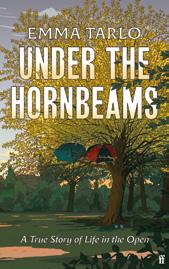
Iain Sinclair, the London-based author who is well-known for his psychogeography of the city, describes the book as ‘a seductive report from an otherness we are in danger of disregarding: roofless nights of stars and storms, misted parkland mornings, the magic of food exchanges and gifted insights. Emma Tarlo is captivated by a threatened Eden where the electively disenfranchised tell their tales and endure inevitable expulsion with stoicism and humour.’
Emma Tarlo is an anthropologist, writer and curator, and an Emeritus Professor at Goldsmiths, University of London. She published the prize-winning Entanglement: The Secret Lives of Hair in 2016.
Under the Hornbeams is available from Primrose Hill Books. www.primrosehillbooks.com





care in your home for independent living
Locally based in Primrose Hill, PillarCare's friendly and experienced team have been helping people live as independently as possible in their own homes for over 20 years Speak to an advisor to find out more


18
Quality
- 020 7482 2188 - pillarcare.co.uk | enquiries@pillarcare.co.uk
Windows on the Past
Long-time Primrose Hill resident Caroline Cooper spent some years researching the history of every single shop, restaurant, pub and café in Primrose Hill. Using Kelly’s Post Office Directories (published every five years until, sadly, they were discontinued in the 1990s), she produced a series of A4 laminated cards detailing the stories behind each address. Many businesses displayed them in their windows, sometimes for years afterwards. In 2006, Caroline published the complete set in a book, Windows on the Past, with sales in aid of the threatened Chalk Farm Library (now Primrose Hill Community Library). In this occasional series, we share extracts of her work.
The Story of Primrose Hill
Primrose Hill has been a mixed area since its first construction – the major part of it between about 1845 and 1870. Unlike, say, Kentish Town, it was not a village overtaken by expanding London, but a wholly new suburb built on the fields round the bottom of the hill itself. This land formed part of the estate of Lord Southampton who in 1840, having sold what he owned in the area of present-day Mornington Crescent and Camden Town, put his more northern fields up for auction.
The only large building in the area then was the Chalk Farm Tavern – on an ancient lane winding west off the comparatively busy Hampstead Road, a medieval route north out of London. This tavern (on the site of Lemonia at 89 Regent’s Park Road) was to remain, and housing to be built all around it and its gardens opposite.

The 1840 sale map outlines an ambitious scheme: large detached and semi-detached villas (a word which has been debased) set in their own spacious gardens, with wide and generously curving roads. The eventual development was both less imposing and more varied. The Primrose Hill residential area has always had a clear physical identity, contained as it is by three boundaries. Two of these pre-date the housing and are formed by transport systems: the Regent’s Canal to the south, completed in 1820; and the railway line out of Euston, opened in 1837, curving round its east and north. The third boundary came in 1842 when an act of Parliament designated the fields of Primrose Hill to the west a future ‘park’. Local residents today have a clear sense of when they are leaving the area. Estate agents, appealing to nostalgia, refer to the shopping area of Regent’s Park Road as ‘the village’ – which it never was.
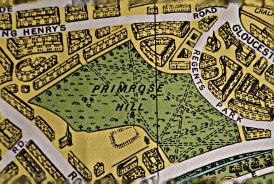
The determining factor for the character of the new suburb was the second of the above three boundaries: the railway. Some of the earliest buildings were the modest railway cottages (on the site of present Auden Place, between Chalcot Road and Regent’s Park Road) which housed the men servicing the noisy engines and goods depots on the site of today’s trendy stalls of Camden Lock. During the 1850s the popularity of rail travel caused the line to become increasingly busy and dirty, the smoke and soot belched out by the coal-burning engines and shunting yards rendering the building plots closest to the tracks undesirable.

Another factor may have been the delay in building. Between the sale of the Southampton estate in 1840 and completion of most of the Primrose Hill area about twenty-five years later there would have been changes in architectural taste and family budgets. London was expanding as fast as the new middle classes.
Eventually only the plots furthest from the railway were developed with the larger homes – and even these were taken by people who were ‘respectable’ rather than ‘fashionable’. Instead, terraces appeared: a row of perhaps five or so narrower houses on a plot where the sale plan had suggested only a pair of detached villas. Many of these terrace houses quickly deteriorated into lodging houses. Some were rented out floor-by-floor, others room-by-room. Washing and cooking facilities were shared and minimal. Simple meals might be provided for boarders.
The many mews secluded behind the main streets housed not only private carriages, but livery stables, artisans’ workshops and light industry, so there has been, right from the start, a healthy admixture of commercial activity. Apart from the railway, two of the larger local employers must have been the piano factory in Fitzroy Road and the Electric Telegraph Company complex in Gloucester Avenue. This variety of use distinguishes Primrose Hill from areas like Belgravia and Kensington – which some consider to be more desirable, and where development was limited to a certain architectural and social uniformity by clauses in the original land sales restricting building to purely residential purposes.
Some of the larger houses in Primrose Hill were purchased freehold, and more were taken on long or short leases. These became one-family homes, employing two or three servants. However the middle-income terraces quickly became densely occupied, with a typical pattern of one family per floor, sometimes one per room. At the lower end of the local social scale, the small two-up two-down railway cottages were occupied by railway workers and their families with, in 1851, an average of four to six people per house. Later censuses suggest that they became poorer and were reduced to one family per room.
Charles Booth, the Victorian sociologist, identified eight classes among the people of London. His 1889 ‘Descriptive Map of London Poverty’ identifies the larger houses of Primrose Hill as ‘upper middle and upper class, comfortable to wealthy, the servantkeeping class’. Others are ‘well-to-do, lower middle class, one or two servants’. Yet others are ‘higher class labour, working class comfort, good ordinary earnings’. But the large households revealed by the censuses suggest tough and cramped conditions which would be classified very differently today.
This new, mixed suburb of Primrose Hill was almost completely constructed by about 1875. The last major development was that of Primrose Hill Studios, off Fitzroy Road, in 1877.
20 21
Chalk Farm Tavern
From a 1940s map of Britain
Regent’s Park Rd shops in 1900
The Volunteer Phone Box Painter
The Volunteer Phone Box Painter
By Maggie Chambers
“Why have all the phone boxes in Primrose Hill turned pink?” was a question directed to me last autumn. I really hadn’t noticed, but suggested it might be undercoat. Later that day two separate people informed me that a man named Rob Pammen had volunteered to repaint them.
I called Rob who told me he began to repaint the phone boxes last year after seeing a shabby-looking one in St John’s Wood. He contacted BT, told them he was a qualified painter, and asked if he could repaint it for them. They agreed and sent him a can of red paint. The following six months saw him restore nine more boxes, or kiosks as they’re officially known. He’s mindful that the preparation needs to be thorough, so he sends before-and-after photos to BT. An initial drawback to his project was that despite doing a good job of repainting them, their appearance was often let down by old graffiti on the glass, or broken and missing panes. He asked BT to repair the damaged glass, and happily they obliged. He finds it heartening that, so far, the ones he’s restored haven’t been damaged.
Rob has a fondness for the old kiosks; he says that they looked after him in the past when he needed to make calls, so he’s happy to look after them in return, “I’m giving back the love they gave me.”
Now 65, Rob has been a painter and decorator since he was 18. He gets enormous satisfaction from painting the kiosks and says “As long as I’m good, I’ll keep going. I get very excited knowing it’s going to look so nice again.” And he’s not the only one who gets satisfaction from his refurbishment: he’s warmed by how many passers-by are intrigued by what he’s doing.

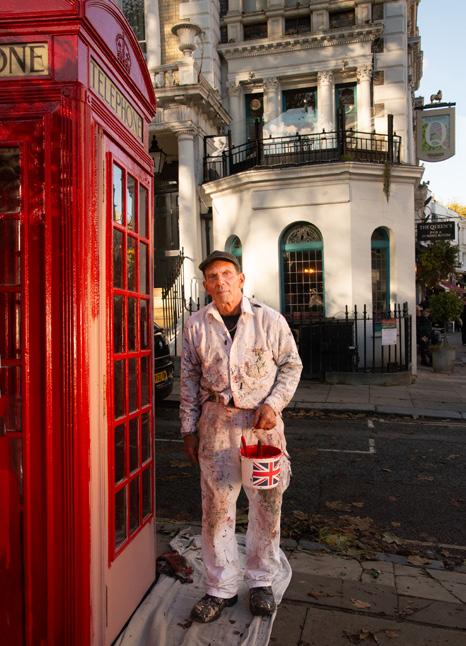
Several have stopped to chat to him in St John’s Wood, but nowhere near as many as in Primrose Hill, where everyone is keen to know his story. He is overwhelmed by how friendly everyone is here!
Interestingly, the original inspiration for the design of the kiosks is situated not far from Primrose Hill: the shape of the phone box is remarkably similar to the tomb in Old St Pancras churchyard which Sir John Soane, architect of the Bank of England, designed for his wife.
In 1912, the General Post Office took over the control of phone boxes. They started to standardise the design, and the first prototype was the K1 in 1920 (K standing for ‘kiosk’), which was box-shaped and made of concrete. Two of these still remain, in Hull and the Isle of Wight.
Then in 1924 the Post Office invited three prominent architects to submit designs for a K2. Sir Giles Gilbert Scott (grandson of George Gilbert Scott, who designed the St Pancras Hotel) won the challenge. Scott had been only 22 when he won the competition to design Liverpool Cathedral in 1903, but he was inspired by the Soane tomb in Old St Pancras Churchyard, and was a trustee of the Sir John Soane Museum in Lincoln’s Inn Fields.
He began to repaint the phone boxes last year after seeing a shabby-looking one in St John’s Wood
His prototype phone kiosks were made from wood, and an original one can still be found just inside the entrance gates of the Royal Academy of Arts in Piccadilly. The K2 design included the royal crest of George V on all four sides of the top of the box, formed in holes to provide ventilation. The kiosks were painted red so they could easily be seen on a busy street.
The K3 design was introduced in 1929, again by Giles Gilbert Scott, and a rare example exists at London Zoo by Penguin Beach. K4 incorporated a postbox and stamp machines, and K5 was just a temporary design for exhibitions. In 1935, the Post Office commissioned a new K6 from Scott for George V’s jubilee. By 1940 there were 35,000 kiosks around the country.
But by the 1970s and 80s, problems with vandalism and lack of repair resulted in the newly privatised BT selling them off and replacing them with new, less visually appealing versions, designed to withstand vandals. Around 2,000 listed K6 kiosks remain, with some having received permission to be converted to other purposes, such as libraries, ATMs, or to house garden displays and artwork.
Perhaps one of the most famous kiosks in London is the one in Heddon Street, off Regent Street, reproduced on the back cover of David Bowie’s The Rise and Fall of Ziggy Stardust and the Spiders from Mars.
Thank you, Rob, for sprucing up our phone boxes in Primrose Hill and keeping this interesting heritage alive.
 Tomb of Sir John Soane
Photo by Sarah Louise Ramsay
Tomb of Sir John Soane
Photo by Sarah Louise Ramsay
23 22
Photo by Sarah Louise Ramsay
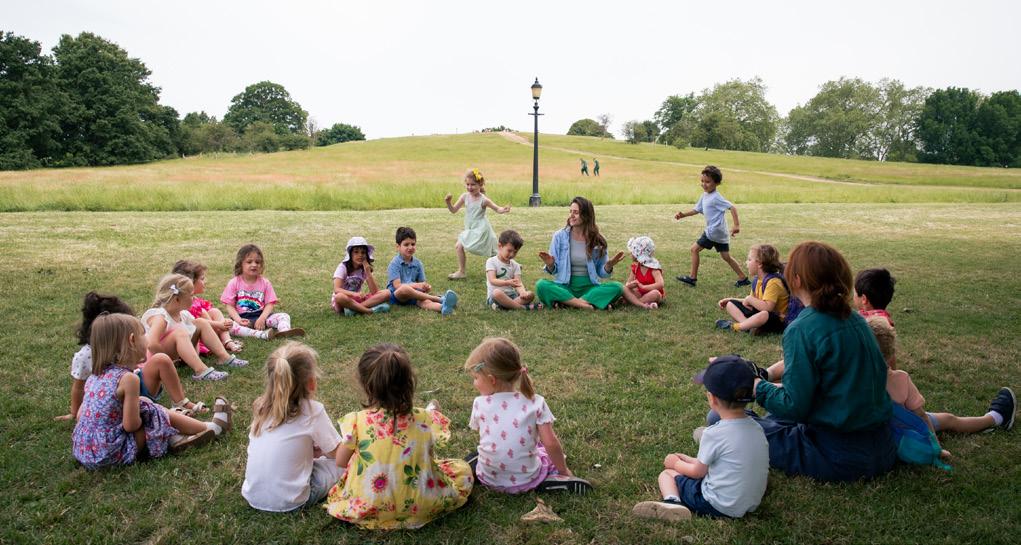
Ready Steady Go – And They’re Off!
By The Mole on the Hill
Kitty: Grandad, why are all them kiddies down there?
The Mole: Ah, that’s the nursery, lass, at the Community Centre.
Kitty: There’s a lot of them there.
The Mole: A fair few. There’s a lot of kiddies live round here and they all need looking after.
And so another morning at Ready Steady Go Fitzroy Road starts with twenty or so children and five team members. The pre-school group was started by Jennifer Silverton in 1988. The name was ‘borrowed’ from the 1960s TV show by her late husband, Peter, who was a music journalist. Ready Steady Go is now registered for Jennifer’s four centres operating under that name.
Jennifer was an only child and went to schools in Wembley and Northwood. It was, she says, a great childhood. But: “School was not stimulating. Not interesting. Boring teachers. I played netball, roller-skated and was crazy about horse-riding. I always loved dance and was offered a place at the Royal Ballet School. But my father, who had been a professional ballet dancer, said no. So went to Nottingham and got my degree in Philosophy, but still I wanted to be a dancer. Since was too old now for classical ballet, I went to the best modern dance school, Andrew Hardie’s. At twenty-two was the oldest in the class by a long way. I did a year’s training there and discovered my father was right. I left, worked in book publishing for two years and then joined Let It Rock, a music magazine. I also played bass in a punk band, The Snivelling Shits, and in a rock band, Driving School, which had a residency at The Cock in Edmonton. (Sadly most of the residents walked out when we started playing.)”
A rather complicated finding of her feet: philosophy, dance, publishing, punk bands, a job on a music magazine, and then a friend said she was wasting her life and ought to do something useful. So Jennifer visited the supply teachers’ office and took a job in an Islington school.
“The children soon realised how inexperienced I was and the class rioted on my first day. But I kept going, went to Goldsmith’s, got my PGTC (postgraduate teacher’s certificate), did several years teaching in schools and colleges and was Inner London Education Authority (ILEA) dance coordinator for three years; but then ILEA folded. Around the same time, opened Ready Steady Go in a garden flat in Primrose Hill. It was half-nursery, half-dance centre. When the pre-school children left, I rolled out the dance floor and taught adults and children. I had very little to do with the pre-school at that point.
“Dance still dominated and I choreographed The Breakfast Bunch, a children’s TV-AM dance group. I also taught dance to opera singers at The Royal Academy of Music and schoolrefusers at Brent Referral Unit. continued my own movement education with Jean Newlove, who was Rudolf Laban's first assistant when he came to England. Jean subsequently became movement teacher to Joan Littlewood's Theatre Workshop and married Ewan McColl.”
In October 1997 the playgroup at the Community Centre closed suddenly and was called by panic-stricken parents. stepped in and opened the second Ready Steady Go. At that time, I didn’t have enough knowledge about early years education, so, as with our King Henry’s Road centre, brought in a great team of people and I oversaw it.”
Ready Steady Go opened its third centre in St John’s Wood in 2000 and its fourth centre in Camden in 2004. From that moment on, Jennifer worked at becoming a highly qualified expert in early years education, training at the Pre-School Learning Alliance in Barnet, qualifying as an early years teacher at the Open University, and taking a Master’s at the Tavistock. In September 2020, Jennifer handed over the role of Principal to her deputy, Harriet Darley, and took a step back into the role of Head of Education.
Early years is a much-neglected area in the UK. In Denmark, which seems to be the centre of all that is good in education, 98% of 3-year-olds attend public kindergarten without charge, and it’s always staffed by qualified teachers. This was why Tessa Jowell started Sure Start in 1998, with the aim of giving children the best possible start in life through the improvement of childcare, early education, health and family support, with an emphasis on outreach and community development. Then, without actually abolishing Sure Start, the Tory government cut funding to such an extent that most of the centres closed. Now the government funds 3−4-year-olds for 570 hours a year, or 15 hours a week for 38 weeks.
“Government funding is not enough. There is a big discrepancy between the funding we receive and the actual costs. Of course, not everyone can afford Ready Steady Go. At our Camden centre, we were able to offer fully funded places to disadvantaged two-year-olds. Sadly, many of our families moved out of London to cheaper accommodation across the country, and RSG Camden closed in 2018. I’m delighted that fully funded places for eligible families are being offered at our St John’s Wood Terrace pre-school.
I wanted to develop an organisation with outstanding early years practice that would make a difference to children from all backgrounds. Amongst other things, we’ve done outreach work at local pre-schools and support the training of early years apprentices and psychotherapy students from the Anna Freud centre, The Tavistock and UCL.”
 Jennifer Silverton
Jennifer Silverton
As if being Ready Steady Go’s Head of Education isn’t enough, Jennifer does sculpting in clay at Hampstead School of Art; runs an online disco called Dancing Crocs; on Fridays she volunteers at the Science Museum; teaches a weekly Laban dance group at the Community Centre; and because she has punished her body with her dance work, she does daily yoga.
So here’s the question: who should be paid more, an early years teacher or a university professor? Answers to the Secretary of State for Education.
Grandad, do you think all those kids are happy at Ready Steady Go?
They must be. don’t hear anyone crying, do you? And they tell me there’s a queue of kids waiting to get in when there’s a space.


24
Mary’s: Working to Prevent Knife Crime
By Xandra Bingley
“It was crazy, man, but it literally showed me how short life is. For someone to lose their life over stupid gang violence is nonsense. To think that you’re with him all day and then you’re never going to see him again, it’s crazy, man. When you’ve got someone that’s more wiser than you, that’s had the experience as well, then they help you get through these difficult times, difficult situation, give you guidance.” Ezekiel (15)
The Christmas and New Year period saw tragedy in Primrose Hill. Two fine boys lost their lives: one white, one black. Two families were left shocked and heartbroken. These are the kind of terrible events that Mary’s youth centre, based at St Mary’s church, works 365 days a year to prevent.
Come January, youth work was continuing as usual at Mary’s, dealing with the two stabbings, a new knife course for schools, remarkable data on how 24-hour mentoring reduces violence, and travelling across the UK to visit bewildered, scared young offenders in prison.
Over the past 10 years, Mary’s has seen 3−5 young
people die a year
We can think of youth violence like an iceberg. The tip is the visible, awful deaths. Over the past 10 years, Mary’s has seen 3−5 young people die a year. Below the water is the prevalence of knifecarrying, poverty and the influence of social media, all of which have changed radically in the same 10 years.
The Mary’s team of 12 deals each year with 300 young people, each at high risk of violent behaviour, and we are in touch with 1,000 more atrisk local youngsters. Many of our team members are previous young offenders.
So what actually works? Since Mary’s was founded in 2006, its leader Jason Allen has been fine-tuning a violence response model. Mary’s two symbiotic operations are 24/7 availability and learned therapeutic mentoring.What 24/7 availability means is that any child or young person, whether caught up in street violence, school exclusion, kidnapping or county lines crime, or just frightened, has the number of their Mary’s mentor.

Day or night, phone calls will be answered. And we do this because violence builds and bad things happen outside office hours, when most other prevention services stop.
Mentoring at Mary’s recognises that trauma is often the precursor to violent behaviour by a young person, so we try to get to the root of the violence. Our research shows that 94% of young people we work with have experienced adverse childhood events, like neglect. A child who regularly misses education, or has a social worker, is twice as likely to become a victim of violence. A child who is in a gang, or carries a knife, or is in contact with the police, is four times more likely to experience being a victim of violence.
The hard work at Mary’s is effective, and also cost-effective. Our cost of operation last year was £695 per young person, which has to be worth it. We help with housing if home isn’t safe, education if school fails, self-esteem, trust, laughter with friends, hope for a new future, regular food, toiletries, daily homework sessions, someone to care.
94% of young people we work with have experienced adverse childhood events
Last year Mary’s prevented 63 street violence situations. At a conservative rate, we prevented 6 knife crimes by stabbing and 3 deaths. Our knife bin outside the church has collected 852 knives in the past 2 years, many because of Mary’s work.
Mary’s is proud to be situated in Primrose Hill. Our community helps in many ways: with finance, and supporting the work and research into why young people are at risk. If any reader would like to help us, please get in touch.
www.maryscharity.org
To meet up or discuss our work, email: info@maryscharity.org


27
26
The team at Mary's
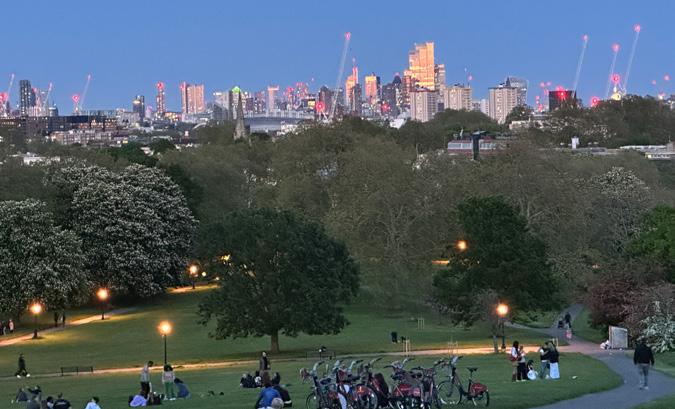

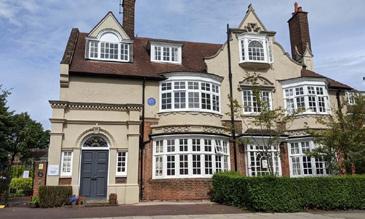




PICTURES FROM PRIMROSE HILL Care homes in Camden Our safe, loving homes offer all the support and facilities that your loved one needs, including general, dementia, and respite care. We use person-centred care, learning the interests and passions of every resident to ensure a ‘Home from Home’ experience. Compton Lodge - 32 rooms Harley Road, NW3 3BX 07811014098 To find out more, ca or visit: www.ccht.org.uk/our-care-homes VILLAGE DISCO THE PRIMROSE HILL 16 March 2024 7pm at The Primrose Hill Community Centre Tickets £10 - www.phca.cc/disco DISCO SOUNDS FROM 1960-1999 Cocktails, cheap bar, pizza, raffle, dancing.
Answers to the quiz
1) It is just 8.6 miles long, connecting Paddington Basin to the Thames docks at Limehouse. From Paddington Basin, the Grand Union Canal runs 137 miles to Birmingham.
2)
Tyburn. The Fleet is further east, running through Camden. While the Fleet flows under the canal, the Tyburn goes over it, within the structure of a bridge.

3)
The cables are rated at 400,000 volts, and are cooled by water pumped from the canal. They are part of the National Grid.
4) In Islington all but the most determined divert onto the road system for about 600 m. The walk to Victoria Park totals about 9 km.

5)
Dead Dog Bridge crosses over Dead Dog Hole, a wharf for canal boats. Being at the end of 26 miles of lock-free canal, refuse – including dead dogs – used to collect here.
6)
The Catacombs were walkways for horses and ponies that worked on the railways. They also accommodated some static steam engines. From 1869 Gilbey’s used them to store whisky, wine and gin. They are well preserved but closed to the public.
7)
The barge Tilbury was carrying kegs of gunpowder, which exploded as it passed under the bridge. All four people on board were killed, including a child. A year later Parliament regulated the transport of gunpowder. The bridge is known to this day as Blow Up Bridge.
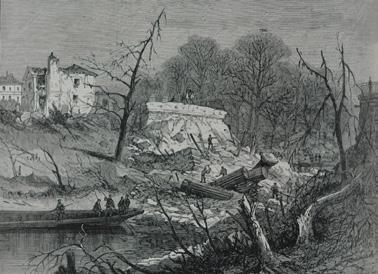
8)
The Pirate Castle was designed by Richard Seifert in the mid-1970s as a community centre run by a charity. It aims ‘to promote life chances, learning and healthy living through canal-based and community activities’. Seifert also designed Centre Point and the NatWest Tower.
9)
The step was so that horses could get out.
10)
It was The Goon Show (1957), and the protagonists were Neddie Seagoon and Major Bloodnok.
SCORE YOUR ANSWERS
0–5 Dead dog
6–7 Goon
8–9 Pirate
10 High-voltage cable
Hello, Primrose Hill!
The Primrose Hill Community Association Burns Night celebration took place at the end of January. The poems of Robert Burns were accompanied by haggis and tatties and neeps, washed down with plenty of whisky.
“While Europe’s eye is fix’d on mighty things, The fate of empires and the fall of kings; While quacks of State must each produce his plan, And even children lisp the Rights of Man; Amid this mighty fuss just let me mention, The Rights of Woman merit some attention.”
Robert Burns
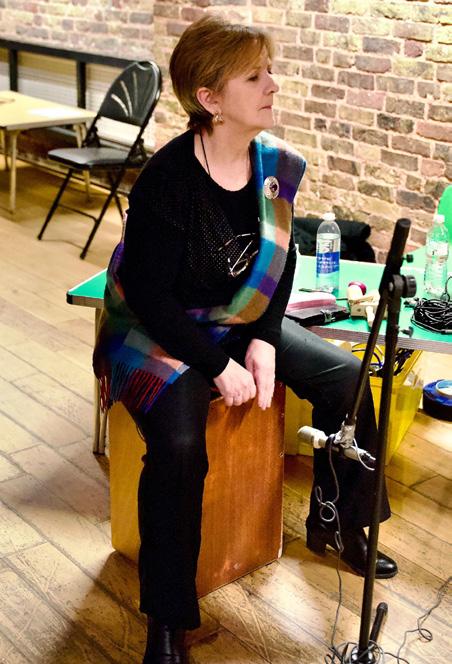
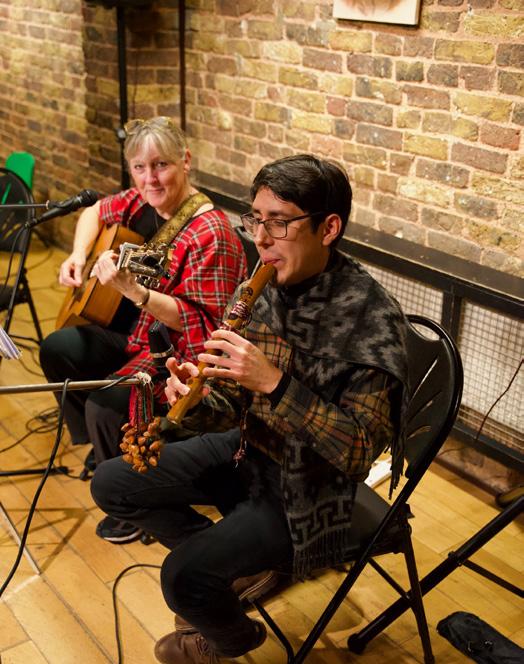

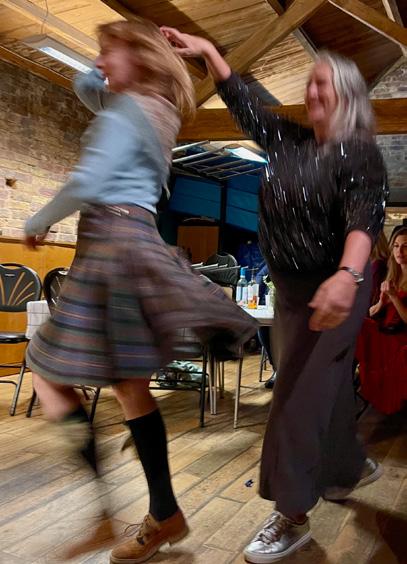
31 30
Photographs by Tim Kirkpatrick
International reach. Local expertise.
From Chelsea to California, we have the key to the world’s finest homes.
Scan to request a market appraisal
30+ UK offices
2,000+ international partners
70,000+ properties overseas
35+ different buyer nationalities
150+ years of experience
The Primrose Hill Specialists
Hamish Gilfeather
Primrose Hill 020 3369 4324
primrosehill@johndwood.co.uk
johndwood.co.uk
Kate Martin
Primrose Hill 020 3151 4653
primrosehill@johndwood.co.uk




















































 Tomb of Sir John Soane
Photo by Sarah Louise Ramsay
Tomb of Sir John Soane
Photo by Sarah Louise Ramsay

 Jennifer Silverton
Jennifer Silverton


















